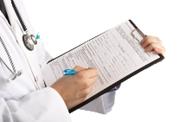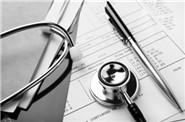December 2009 Volume 25, Number 16 Special Edition
New York State Medicaid Update
The official newsletter of the New York Medicaid Program
David A. Paterson, Governor
State of New York
Richard F. Daines, M.D. Commissioner
New York State DOH

Chapter 58 of the Laws of 2009 authorized the New York State Department of Health (NYSDOH) to implement an initiative to incentivize the development of patient-centered medical homes to improve health outcomes through better coordination and integration of patient care for persons enrolled in New York Medicaid.
Definition of a Medical Home:
The American College of Physicians (ACP), the American Academy of Family Physicians (AAFP), the American Academy of Pediatrics (AAP), and the American Osteopathic Association (AOA), have jointly defined the medical home as a model of care where each patient has an ongoing relationship with a personal physician who leads a team that takes collective responsibility for patient care. The physician-led care team, which also may include roles for nurse practitioners or physician assistants, is responsible for providing all the patient's health care needs and, when needed, arranges for appropriate care with other qualified physicians.
NCQA Physician-Practice Connections - Patient Centered Medical Home Program (PPC®-PCMH™)
New York Medicaid has chosen to adopt medical home standards that are consistent with those of the National Committee for Quality Assurance's (NCQA) Physician Practice Connections® - Patient-Centered Medical Home Program (PPC-PCMH™). The PPC-PCMH™ is a model of care that seeks to strengthen the physician-patient relationship by promoting improved access, coordinated care, and enhanced patient/family engagement.
A medical home also emphasizes enhanced care through open scheduling, expanded hours, and communication between patients, providers and staff. Care is also facilitated by registries, information technology, health information exchange and other means to ensure that patients obtain the proper care in a culturally and linguistically appropriate manner.
The NCQA PPC®-PCMH™ program assesses whether practices are functioning as medical homes. Building on the joint principles developed by the primary care specialty societies, the PPC®-PCMH™ standards emphasize the use of systematic, patient-centered, coordinated care management processes.



NCQA has designed a recognition program to objectively measure the degree to which a primary care practice meets the operational principles of a patient-centered medical home. The NCQA program features three tiers of medical home recognition. Achievement of a given tier is dependent upon a point-scoring system whereby points are awarded if the practice has achieved competency in a given business/practice management process.
- Level 1 functions as the basic tier and can be achieved without deploying electronic health records (EHR).
- Level 2 requires some electronic functions.
- Level 3 requires a fully functional EHR.
PPC®-PCMH™ includes nine standards that medical practices must meet, including use of patient self-management support, care coordination, evidence-based guidelines for chronic conditions and performance reporting and improvement. To be recognized as a patient-centered medical home, practices need to demonstrate the ability to meet the criteria of these standards (i.e. achieve a minimum of 25 points out of 100 to attain the first of three levels of recognition) and specifically pass at least five of the following 10 elements:
- Written standards for patient access and patient communication;
- Use of data to show standards for patient access and communication are met;
- Use of paper or electronic charting tools to organize clinical information;
- Use of data to identify important diagnoses and conditions in practice;
- Adoption and implementation of evidence-based guidelines for three chronic conditions;
- Active patient self-management support;
- Systematic tracking of test results and identification of abnormal results;
- Referral tracking, using a paper or electronic system;
- Clinical and/or service performance measurement, by physician or across the practice;
- Performance reporting, by physician or across the practice.
PPC®-PCMH™ content and scoring is outlined in the following charts. For more information, providers are encouraged to visit the NCQA Website at http://www.ncqa.org/.
| Level of Qualifying | Points | Must Pass Elements at 50% Performance Level |
|---|---|---|
| Level 3 | 75 - 100 | 10 of 10 |
| Level 2 | 50 - 74 | 10 of 10 |
| Level 1 | 25 - 49 | 5 of 10 |
| Not Recognized | 0 - 24 | ‹5 |
Levels: If there is a difference in Level achieved between the number of points and "Must Pass", the practice will be awarded the lesser level; for example, if a practice has 65 points but passes only 7 "Must Pass" Elements, the practice will achieve at Level 1.
Practices with a numeric score of 0 to 24 points or less that 5 "Must Pass" Elements do not Qualify.
| Standard 1: Access and Communication A. Has written standards for patient communication" B. Uses data to show it meets its standards for patient access and communication** |
Pts 4 5 ______ 9 | Standard 5: Electronic Prescribing A. Uses electronic system to write prescriptions B. Has electronic prescription writer with safety checks C. Has electronic prescription writer with costs check | Pts 3 3 2 ______ 8 |
| Standard 2: Patient Tracking and Registry Functions A. User data system for basic patient information (mostly non-clinical data) B. Has clinical data system with clinical data in searchable data fields C. Uses the clinical data system D. Uses paper or electronic-based charting tools to organize clinical information** E. Uses data to identify important diagnoses and conditions in practice** F. Generates lists of patients and reminds patients and clinicians of services needed (population management) |
Pts 2 3 3 6 4 3 ______ 21 |
Standard 6: Test Tracking A. Tracks tests and identifies abnormal results systematically** B. Uses electronic systems to order and retrieve tests and flag duplicate tests | Pts 7 6 ______ 13 |
| Standard 3: Care Management A. Adopts and implements evidence-based guidelines for three conditions** B. Generates reminders about preventive services for clinicians C. Uses non-physician staff to manage patient care D. Conducts care management, including care plans, assessing progress, addressing barriers E. Coordinates care/follow-up for patients who receive care in inpatient and outpatient facilities | Pts 3 4 3 5 5 ______ 20 |
Standard 7: Referral Tracking A. Tracks referrals using paper-based or electronic system** | Pts 4 ______ 4 |
| Standard 4: Patient Self-Management Support A. Assesses language preference and other communication barriers B. Actively supports patient self-management** | Pts 2 4 ______ 6 |
Standard 8: Performance Reporting and Improvement A. Measures clinical and/or service performance by physician or across the practice** B. Survey of patients' care experience C. Reports performance across the practice or by physician** D. Sets goals and takes action to improve performance E. Produces reports using standardized measures F. Transmits reports with standardized measures electronically to external entities | Pts 3 3 3 3 2 1 ______ 15 |
| Standard 9: Advanced Electronic Communications A. Availability of interactive Website B. Electronic Patient Identification C. Electronic Care Management Support | Pts 1 2 1 ______ 4 |
Medical Home Incentive Payments
Upon federal approval, office-based practitioners (physicians and registered nurse practitioners) and Article 28 clinics recognized by NCQA's PPC-PCMH™ will receive additional payment for primary care services provided to Medicaid beneficiaries. The enhanced payment will be associated with the provider's or clinic's NPI and will be paid through eMedNY for Medicaid fee-for-service patients and by health plans for those enrolled in Medicaid Managed Care or Family Health Plus. The implementation date will be announced when federal approval is granted. Billing guidance will be provided in a future edition of the Medicaid Update once federal approval is received.
Consistent with NCQA recognition levels, there will be three levels of incentive payments for fee-for-service providers as illustrated in the chart below. Claims with appropriately coded Evaluation and Management (E&M) codes 99201-99205, 99211-99215, or Preventive Medicine codes 99381-99386, 99391-99396 will be eligible for an enhanced payment, commensurate with the level of NCQA recognition received by the provider. NCQA recognized providers that participate in Medicaid and Family Health Plus health plans will receive details on the payment amounts they can expect for services provided to plan enrollees.
Fee-for-service add-on incentive payment amounts for providers achieving patient-centered medical home recognition are as follows:
| Setting | Level I | Level II | Level III |
|---|---|---|---|
| Article 28 clinics | $5.50 | $11.25 | $16.75 |
| Office-based practitioners* | $7.00 | $14.25 | $21.25 |
* includes physicians and registered nurse practitioners.
The following example illustrates how the incentive will work:
- The Medicaid fee for an office visit claim with E&M code 99203 is $56.93.
- A physician with Level 3 designation will be reimbursed $78.18 ($56.93 + $21.25).
- A physician with Level 2 designation will be reimbursed $71.18 ($56.93 + $14.25).
- A physician with Level 1 designation will be reimbursed $63.93 ($56.93 + $7.00).
New York Medicaid will end payments for Level 1 recognition after December 2012.
Fee-for-Service Billing Requirements:
Office-based practitioners will receive the medical home add-on payment when they fulfill the following requirements:
- In an individual provider's practice the billing practitioner must be designated as a New York Medicaid Medical Home (Level 1, Level 2, or Level 3);
- In a practitioner group practice the group NPI (National Provider Identifier) and the billing practitioner NPI must be designated as a New York Medicaid Medical Home (Level 1, Level 2, or Level 3);
- The claim must contain, and the service provided must be consistent with, one of the following Evaluation & Management codes (E&M) 99201- 99205, 99211- 99215; or one of the following Preventive Medicine codes 99381- 99386, 99391- 99396. The place of service coded on the claim must be office (POS '11').
Article 28 Clinics - OPD, D&TC and FQHCs
The medical home designation will be associated with each clinic on a site-specific basis. Clinics will receive the medical home add-on when they fulfill the following requirements:
- The billing clinic (site-specific) must be designated as a medical home (Level 1, Level 2, or Level 3);
- Claims must contain, and the service provided must be consistent with, one of the following Evaluation & Management codes (E&M) 99201- 99205, 99211- 99215; or one of the following Preventive Medicine codes 99381- 99386, 99391- 99396.
In the event that both a practitioner working in a clinic (who submits a professional claim) and the clinic have a medical home designation, only the clinic will receive the enhanced payment.
New York Medicaid providers participating in the Adirondack Medical Home Demonstration Project are not eligible for enhanced payment through the Statewide Patient-Centered Medical Home Program.
Questions/Information
For more information on how to achieve NCQA certification as a NCQA PPC-PCMH™, providers should contact NCQA Customer Support at (800) 839-6487, or visit the NCQA Website at http://www.ncqa.org. Since New York Medicaid is recognized as a sponsoring organization, providers will receive a 20 percent discount from NCQA toward the cost of the PPC-PCMH™ application. Questions regarding New York Medicaid's Patient-Centered Medical Home initiative may be directed to the Office of Health Insurance Program's Division of Financial Planning and Policy at (518) 473-2160.
Please contact the Bureau of Managed Care Finance at (518) 474-5050 with any questions regarding health plan medical home payments for network providers.